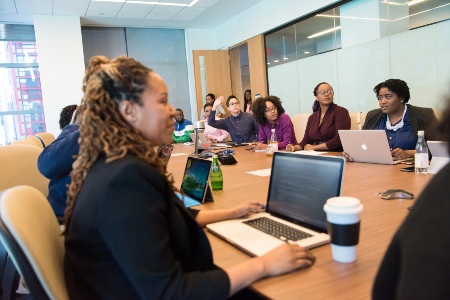How to REALLY Change Behaviors to Build DEIB
What exactly does it mean for a company to be diverse, equitable and inclusive, and offer a feeling of belonging, as well? In today’s corporate world, these values mean that you have a company that not only cares about all its employees, but it’s one that actively practices changing behaviors that undermine important factors such as psychological safety and access to opportunities.
Diversity, equity, inclusion, and belonging (DEIB) work in concert to improve workplace dynamics, productivity, and the social and professional community of an organization. When a company decides to incorporate these into their way of being, they see a genuine shift in culture, as well as in the success of the business.
DEIB is both a leadership and an organizational competency — one that needs to be nurtured and encouraged. An effective way to do this is through coaching.
Employees won’t tolerate a lack of DEIB
Changing behaviors isn’t easy. People are often set in their ways or don’t fully realize the impact of their actions, which doesn’t always make for a positive work environment. These particular environments are motivating more and more talented employees to become part of the Great Resignation. They’re leaving because they’re tired of trying to change the system in organizations that are not living up to their commitments to DEIB.

Training alone doesn’t work to build DEIB
While DEIB is increasingly on the agenda of organizations around the world, it often falls to the bottom of priority lists when it comes time to take action. Part of the problem is that many business leaders don’t know how to change behaviors and foster a culture of inclusion and belonging for the long term. Some corporations attempt to advance diversity and inclusion through diversity training, which often includes unconscious bias training.
“The aim of unconscious bias training is to help employees identify the beliefs and social stereotypes they hold about certain groups of people that are outside their own conscious awareness. There is, however, a growing body of research that finds unconscious bias training is, at best, ineffective and, at worst, it serves to reinforce the biases people hold,” said Dr. Janice Gassam Asare in her Forbes article.
DEIB is both a leadership and an organizational competency — one that needs to be nurtured and encouraged. An effective way to do this is through coaching.
Coaching can be used to help individual employees who may have exhibited or been accused of inappropriate, discriminatory or harassing behaviors. It can help identify and eliminate generational stereotypes.
Utilizing coaching fosters DEIB
“We’ve seen organizations over the past couple of years increase focus around diversity, and then they began to establish more language around equity and inclusion, and now, belonging, which is the ultimate outcome,” said Meghan Mahoney, an AceUp leadership coach and the founder and principal of M2 Coaching and Consulting.
But where do you begin? How do you change behaviors? Begin by making an actionable plan, and by recognizing where the problems lie.
- Understanding the root causes of discrimination, inequity, and the effect of biases in the workplace is the first step in taking action to eradicate them. Take an honest look at which groups are underrepresented not only in senior leadership but in all levels of your workforce. This could be a prime opportunity to utilize group coaching, which will encourage your teams to rally around a common challenge or opportunity, identify problem areas, commit to team accountability, and take collective action.
- Coaching can be used to help individual employees who may have exhibited or been accused of inappropriate, discriminatory, or harassing behaviors. It can help identify and eliminate generational stereotypes. And coaching can also help employees understand how their peers are similar and different from them and how to interact effectively.
- If a business or corporation commits to truly taking action to create a more inclusive and diverse workplace through individual, team, and leadership coaching, it will allow each person invested to feel valued and increase employee engagement.

It’s time to make all voices heard
If you recognize a need to change behaviors in your organization, coaching can be the key to a more diverse, inclusive, equitable company, where your employees feel like they belong. The time is now for all voices to be heard at the table.
“What we’ve seen over the last year — and I’m heartened by this — is that I think we’re moving beyond the business case. We’re moving on the human case,” Mahoney said. “That doesn’t necessarily mean it’s easy work. It’s not. It takes work and it takes focus.”
This work, she said, is a relational journey about interactions between human beings, and it’s about supporting human beings through that journey.
Are You Ready?
Get in touch with us to schedule a demo and see how AceUp can help you build a premier coaching program for your top talent.